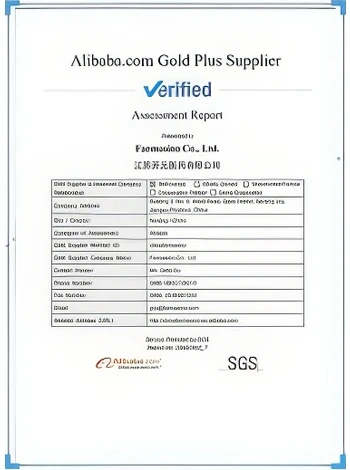



Sodium Hydroxide Utilization in Effective Wastewater Treatment Processes and Techniques
The Role of Sodium Hydroxide in Wastewater Treatment
Wastewater treatment is a critical process designed to remove contaminants and pollutants from water before it is released back into the environment or reused for various purposes. Among the various chemicals used in wastewater treatment, sodium hydroxide (NaOH), commonly known as lye or caustic soda, plays a significant role. This article explores the importance of sodium hydroxide in wastewater treatment and how it enhances the effectiveness of the overall treatment process.
Chemical Properties and Reactions
Sodium hydroxide is a strong alkaline compound that readily dissociates in water to yield hydroxide ions (OH⁻). This high alkalinity is particularly valuable in wastewater treatment, as it can adjust the pH of wastewater, facilitating the precipitation of heavy metals and other contaminants. Many industrial processes generate wastewater that contains heavy metals such as lead, copper, and zinc. By adding sodium hydroxide, the pH can be raised, leading to the formation of insoluble metal hydroxides, which can then be separated from the water through sedimentation or filtration.
Neutralization of Acidic Wastewater
In many instances, wastewater from industrial activities is acidic, resulting from processes such as metal finishing, textile dyeing, or the production of certain chemicals. The introduction of sodium hydroxide into such wastewater effectively neutralizes the acidity. This neutralization not only mitigates the harmful effects of acidic discharges on the environment but also creates conditions conducive for the biological treatment processes that follow. By maintaining an optimal pH range (typically between 6 and 9), the activity of microorganisms involved in biological treatment is maximized, leading to more efficient degradation of organic pollutants.
sodium hydroxide in wastewater treatment

Enhancement of Biological Processes
Sodium hydroxide does not only serve as a neutralizing agent but also plays a pivotal role in enhancing biological treatments. By controlling pH levels, it ensures that microorganisms, such as bacteria used in aerobic and anaerobic digestion, thrive in an environment that promotes their growth and activity. These microorganisms are essential for breaking down organic matter—transforming complex compounds into simpler substances that can be further processed or safely released into natural waterways.
Safety and Handling Considerations
While sodium hydroxide is a powerful tool in wastewater treatment, it must be handled with caution. It is highly caustic and can cause severe burns upon contact with skin or eyes. Wastewater treatment facilities using NaOH must implement rigorous safety protocols, including appropriate personal protective equipment (PPE) and training for personnel. Moreover, the dosage of sodium hydroxide must be carefully controlled to avoid overshooting the desired pH levels, which can lead to further complications in treatment processes.
Conclusion
In summary, sodium hydroxide is an essential chemical in the wastewater treatment process, contributing to pH adjustment, heavy metal removal, and the enhancement of biological treatment efficiencies. As industries continue to evolve and regulations on wastewater discharge become stricter, the effective use of sodium hydroxide will remain pertinent in promoting sustainable wastewater management practices. By ensuring safe and efficient application, facilities can harness the benefits of sodium hydroxide while protecting public health and the environment.
-
Why Sodium Persulfate Is Everywhere NowNewsJul.07,2025
-
Why Polyacrylamide Is in High DemandNewsJul.07,2025
-
Understanding Paint Chemicals and Their ApplicationsNewsJul.07,2025
-
Smart Use Of Mining ChemicalsNewsJul.07,2025
-
Practical Uses of Potassium MonopersulfateNewsJul.07,2025
-
Agrochemicals In Real FarmingNewsJul.07,2025
-
Sodium Chlorite Hot UsesNewsJul.01,2025










